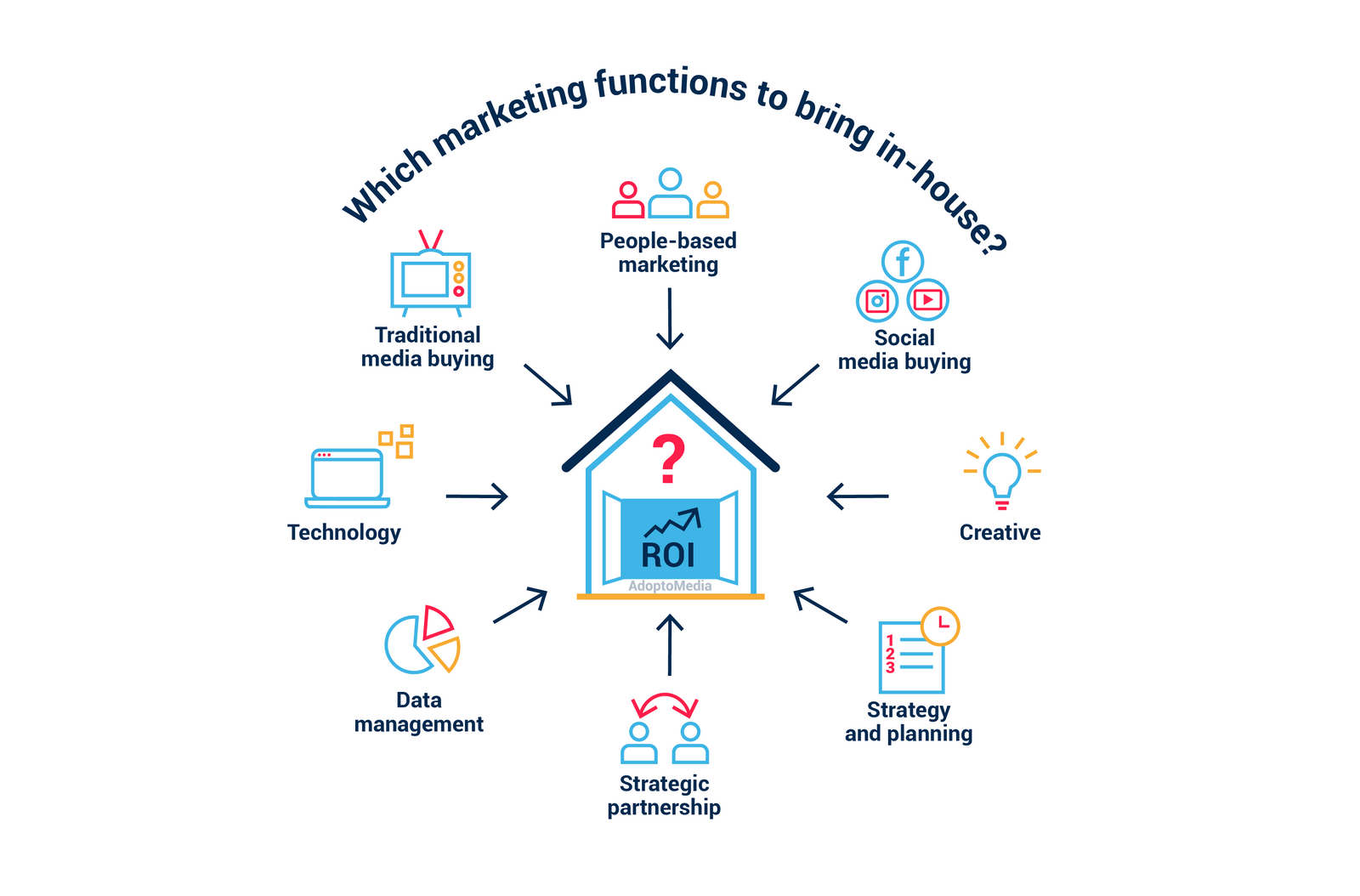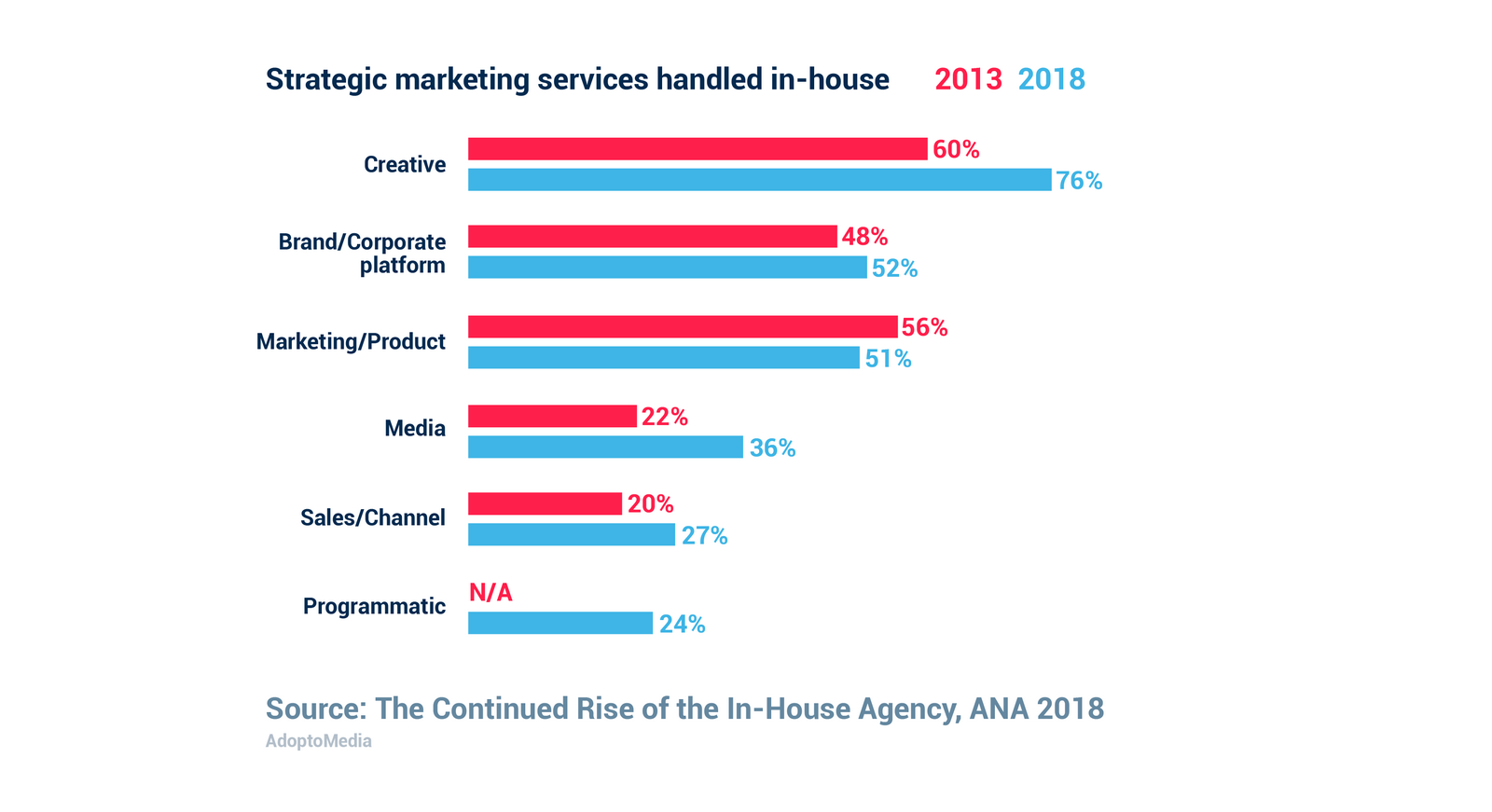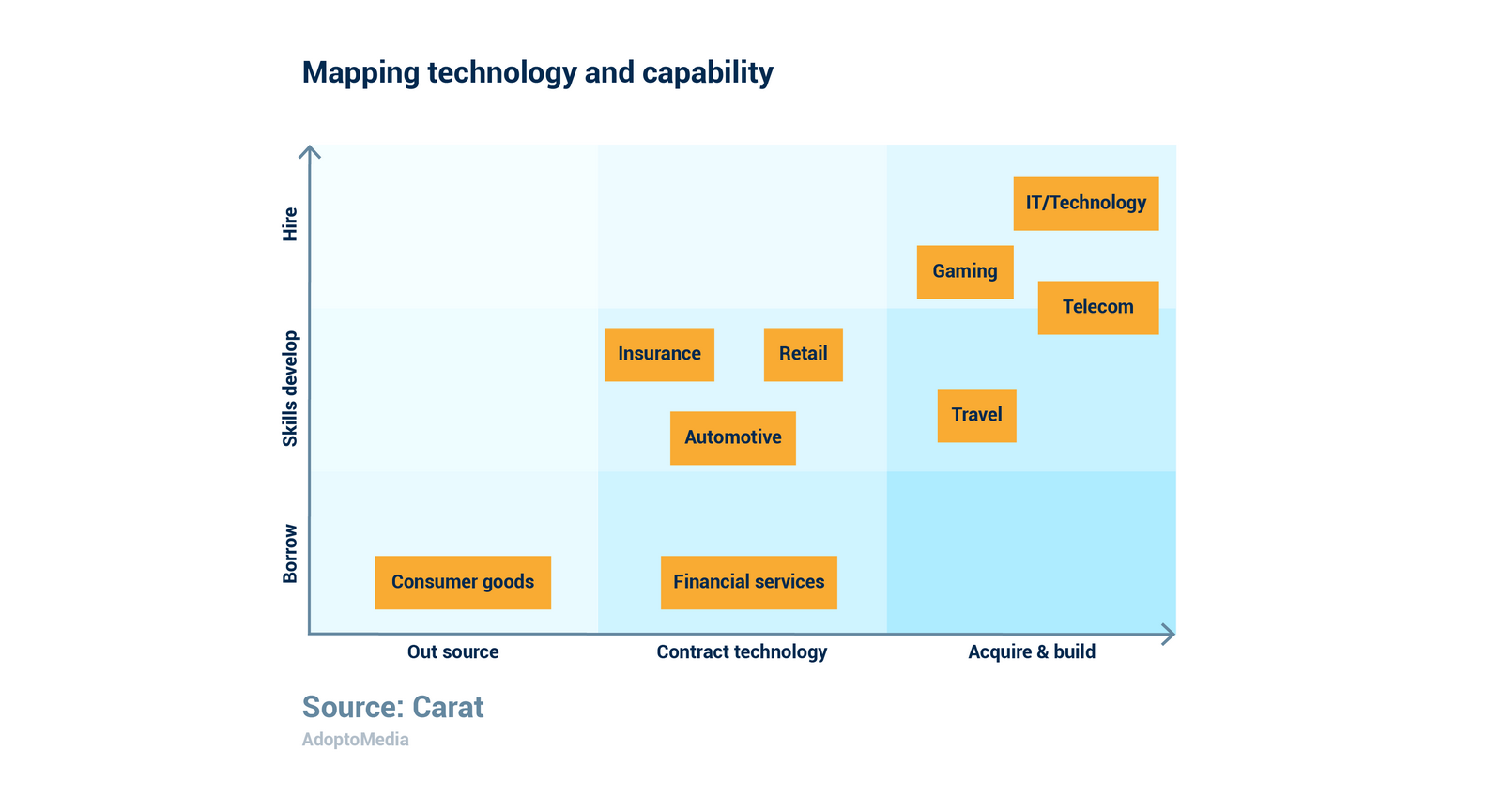
After the transparency scandal broke out in the marketing industry, advertisers tried to solve this issue by in-housing some operations. Even though it initially results in ROI increase, it doesn’t mean this strategy is perfect. There are some factors that encourage companies to bring marketing functions in-house, but there are also some risks to consider.
A large media agency Carat published a guide in April 2019 on how to efficiently in-house marketing operations and achieve the best results. Digital transformation requires changes, and relations between advertisers and agencies is one of the first things that should be reviewed to achieve more cooperation, a better dialogue and higher transparency. The problem with in-housing is that it loses its value over time and doesn’t result un as high ROI as initially. Sure it is inspiring to learn that one of the world’s largest advertisers Procter&Gamble set up its own in-house agency and managed to save $750 million in 2017, but such a transition should be performed very carefully with all the advantages and disadvantages taken into consideration.
To achieve long-term positive results with in-housing you need to:
- align your company’s data strategy to its in-housing objective and single out data maturity as a key factor for decision-making;
- make sure that you invest in technology according to marketing capabilities and needed business outcomes, because the implementation of new technologies should not become more important than long term ROI from such investments;
- find a way to handle possible future risks of ROI erosion before in-housing.
You need a new agency-client model with more partnership and a more flexible access to expertise and talent owned by agency. Half of C-Level marketing leaders interviewed by Dentsu Aegis Network in 2018 were planning to in-house some operations in the nearest future, 30% wanted to reduce the number of partner agencies and most of them were going to provide training for employees and use customer data in a better way. The number of US advertisers planning to in-house some marketing operations doubled since 2013 and reached 78% in 2018.
In-house agencies in the U.S.

But it shouldn’t be surprising, because in the era of digital transformation marketers need to work at the intersection of data, technology and marketing capabilities. Most companies are planning to in-house some aspects of marketing and have already started the process.

Agencies in the age of transformation
Agencies have overtime gained a lot of knowledge and deep understanding of how to shape people’s experience of a brand and use data and new technology to positively influence business results, so this digital transformation and in-housing trend doesn’t mean they are becoming obsolete. We can see that a new model of advertiser-agency relationship is emerging, one that is smarter and involves greater integration between both parties. Another feature of the new model is that agencies can take on the role of advisers, meaning agencies should include consultancy in their services.
Sustainable ROI increase
For a start, we need to understand why companies decide to set up in-house agencies. It usually happens that after in sourcing some operations a company gets a higher ROI, but this period is followed by gradual decline of ROI, so there is no need to concentrate only on this factor, because there are five more reasons for a company to perform such a transition.
- Data ownership: It enables companies to better collect, manage and use data.
- Cost reduction and transparency: In-housing allows companies to bring down costs, more easily track marketing operations, measure ROI and negotiate some questions directly with technology providers and media vendors.
- Operational efficiency and control: It can be achieved through more integration, consolidation and alignment of operational processes, which is now easy with new marketing technology. But even though taking the agency out of the picture may simplify some processes and save money, agencies are more experienced to organise and manage large-scale campaigns.
- Closing the gap with customers: with increasing number of agencies that a company employs the gap between brand and customers is widening, especially when it comes to businesses that don’t work directly with customers.
- Bringing accountability home: it is natural to expect better results in viewability, brand safety, and ad fraud when the company itself is accountable for the marketing decisions. And brand values, KPIs and revenue will get a higher priority than in an agency that has to take care of other clients and its own performance.
But you shouldn’t focus to much on any of these factors, because the key to sustainable ROI increase is effectiveness, not efficiency. Not every company can reach the necessary level of expertise and technological advance with their in-house departments, that’s why many of them have to eventually return to agencies.
Itis effectiveness, not efficiency, that drives long-term improvements in ROI
Thinking ahead
To successfully bring operations in-house a company needs to carefully plan everything and think ahead, also there are three things that need to be done.
1. Align data and in-sourcing strategies
The key to a better consumer experience is to develop a single data strategy for different business divisions, marketing functions and partners. Without aligning resources along the customer’s journey (media, CRM, digital, search and social) it’s impossible to achieve a long-term ROI increase. First of all, a company needs to assess the maturity of its approach to data and intelligence before in-housing any operations. On the Data Maturity Matrix below you can see which capabilities are easier and more difficult to in-house, as well as their impact on factors like planning, data collection, shared infrastructure and governance.

When it comes to data, you need to decide whether to work directly with a Data Management Platform (DMP) and assess whether you have enough data. Additionally, you should clearly understand how new technology can aid in implementing your business strategy before investing in it. Finally, assess your capabilities with an unbiased perspective to ensure you can fully leverage the potential of new technology.
2. Choose the right transformation model
According to the Internet Advertising Bureau’s report, only 20% of marketers choose a full in-housing approach. This is understandable because not every company has all the necessary capabilities for such a challenging transition. Also the most successful examples of in-housing can be found in companies that already had enough technological resources, data and experience in a certain field prior to in-housing. A sustainable way here would be to find the right balance between skills and technology. With the Target Model Map below you can find the right approach to capabilities and technology for different businesses. You can hire, develop or borrow necessary capabilities and as for technology there are such options as outsourcing, contracting directly or building your own ad-tech. The choice depends on the needs of the company and operational environment.

To choose the right option you should understand whether it is cost-efficient to invest in new technology and if you will be able to handle it properly and stay competitive.
3. Plan ahead for sustainable ROI
To avoid gradual ROI erosion agencies and clients need to change the nature of their partnership and when making decisions they should be guided by the following factors.
- If companies take ad-agencies out of marketing processes and start doing everything themselves without paying commissions, it does not always mean a more efficient budget allocation and long-term benefit, so both parties need to find a more holistic way to cooperate and improve visibility of operations.
- In-housing does not benefit specialists because they lose the advantage of task diversity and access to the best industry practice that they have in agencies. According to ANA’s 2018 report about the rise of in-house agencies, about half of companies find talent recruitment and retention the most challenging. With some help from agency partnerships, companies can create suitable career paths for digital specialists.
- It is necessary to learn as much about marketing as agencies do to understand how to apply technology, inventory and data in the best way. Without understanding how everything works even very effective tools like programmatic ads will be useless, especially when it comes to multi-market campaigns. In-housing can sometimes result in too much focus on short-term goals, which negatively affects ROI. To avoid such problems a company needs to create a new partnership model with its agencies.
Obviously the technology tries to keep up with the marketing industry agenda and develops tools that would help advertisers address existing issues. AdoptoMedia offers a flexible platform that makes in-housing and digital transformation processes much easier. It can be integrated into existing IT infrastructure of a company to achieve the necessary level of transparency in cross department operations, verify compliance, manage contracts, provide visibility of numerous operations for C-level executives and set common KPIs. It is an advanced tool for strategic and tactical assistance in marketing that increases ROMI by at least 10-20% and calculates it in real time.


